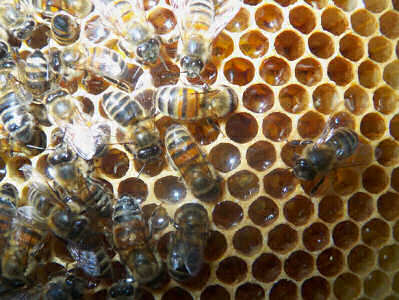How is Bee’s wax made?

When honey bees are between 12 and 20 days old, they develop a special wax-producing gland in the abdomen of their bodies. This special gland converts sugar from the honey into a waxy substance and deposits flakes of the substance on the abdomen.
These small flakes of wax are collected by the other bees and chewed in their mouths. The bees then add these pieces of wax to a wax foundation provided by the beekeeper as a starter to assist in the comb construction. In the wild, the bees start from scratch.
Beekeepers often use the expression that ‘the wax is drawn’ or ‘drawn out’, this means that the bees have used the flat foundation wax provided by the beekeeper and made it thicker – turning it into the well known hexagonal comb cells which are used for storing honey or egg laying.
The wax foundation can be used wired or unwired. Unwired wax foundation is mostly used by beekeepers who want to use cut comb (mostly used in the supers), and wired foundation is used to strengthen the wax to keep it secure within the frames. If the comb is full of honey it becomes very heavy and could fall out of the frames.
Bees keep the inside of the hive at a constant temperature which makes the wax easy to manipulate and the right consistency to allow the bees to build. If the hive gets too hot the wax drips and if it gets too cold it becomes brittle.
It has been estimated that it takes 2.72kg (6lb) of honey to make 0.45kg (1lb) of wax.
Copyright © Cornwall Honey
